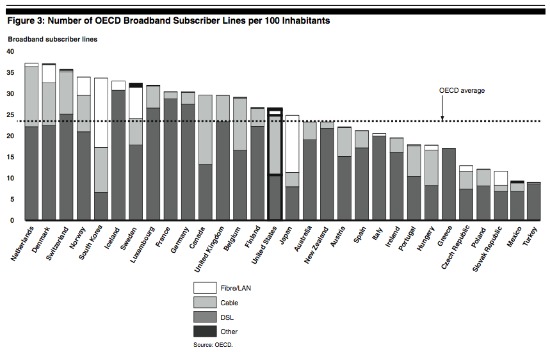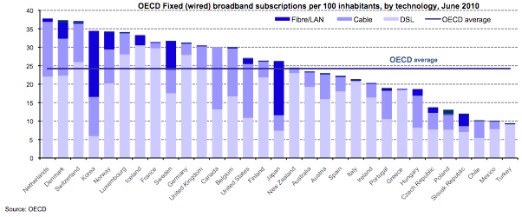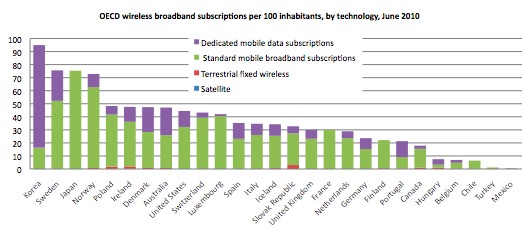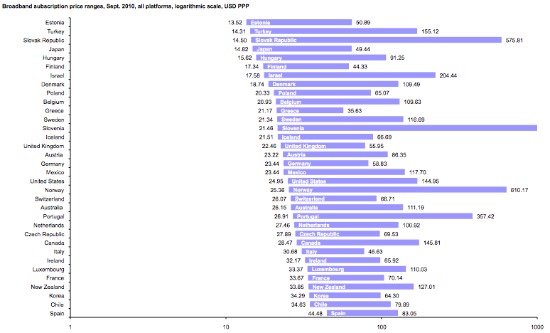FCC’s new report “The Information Needs of Communities,” released Thursday, surveys the current state of the American media and finds “a shortage of local, professional accountability reporting.” The report’s lead author, Steve Waldman, argues that the expansion and proliferation of online media outlets have not yet made up for shrinking newspaper staffs and budgets—especially in the area of local news.
One of Waldman’s policy recommendations to encourage innovation is to expand broadband access across the country—by way of public libraries, by encouraging digital and media literacy, and by creating a wireless broadband “auction” so that broadcasters can sell some of their spectrum, perhaps for educational programming.
As quickly as online media has grown in the past decade and a half in the US, it might be surprising to see how Americans fare when compared to the rest of the world. Earlier in the report, Waldman notes that while almost all Americans have easy access to TV, only about 55 percent of Americans have a broadband Internet connection at home. This is a problem, he says, because:
If traditional media companies devote fewer resources to accountability journalism, it becomes more important for all Americans to have access to a full range of comparable resources online. Those that have low quality newspapers or TV and limited Internet access end up with less useful news. Conversely, greater broadband penetration will make it more likely that local digital media efforts will succeed.
Here’s a graph that the Government Accountability Office put out last September, in the context of some research in response to the proposed National Broadband Plan. It compares the number of broadband subscriber lines in the countries represented by the Organisation for Economic Cooperation and Development (OECD), per 100 people. In 2009, the US ranked number fifteen, just above average:

Here are the latest numbers available from OECD, as of June 2010; the US has moved up, from fifteenth to fourteenth in fixed broadband subcriptions:

And when it comes to wireless broadband, as of June 2010, the US ranks ninth.

The title of the GAO report from last September was pretty self-explanatory: “National Broadband Plan Reflects the Experiences of Leading Countries, but Implementation Will Be Challenging.” It noted that among Americans who did not have broadband connections in their homes, one third said that cost was the main factor affecting that decision, and, “Additionally, subscription costs generally increase with speed, making higher-speed services typically more expensive for users to adopt.”
Waldman makes the same point in his FCC report:
A murkier issue is how to deal with the substantial number of Americans who live in communities with high-speed Internet service yet are not using it. In some cases, this is because the service is too expensive.
On the cost of broadband, the US also comes out about average in comparison to the other OECD countries. This shows the price ranges of monthly broadband subscriptions among all platforms (including line charges, and expressed in US dollars):

Doesn’t this chart make you wonder what kind of service some Norwegians get, for $610 a month, compared to what their fellow countrymen get for $25?
Incidentally, on Wednesday, the Netherlands—which currently ranks first in fixed broadband subscriptions, but behind the US in wireless, according to the charts above—became the first European country to formally put net neutrality into law. As that Register article notes, Chile was the first country in the world to do so.
Lauren Kirchner is a freelance writer covering digital security for CJR. Find her on Twitter at @lkirchner
